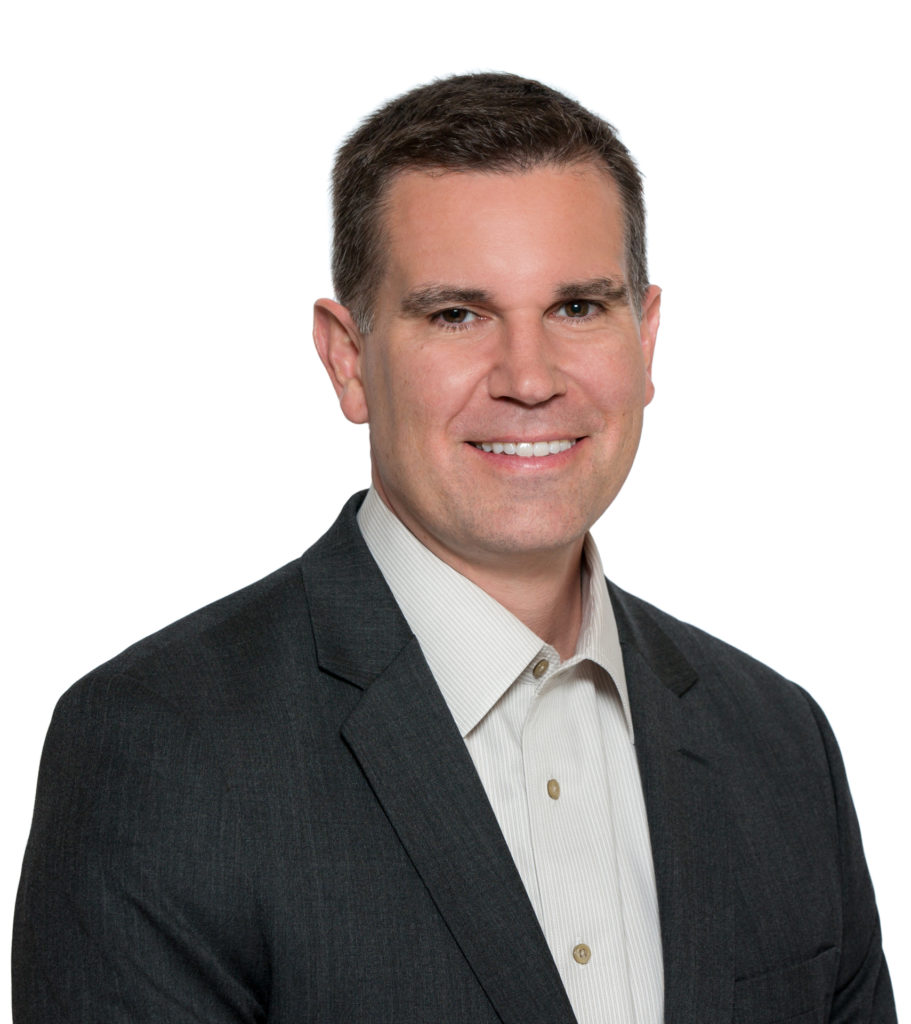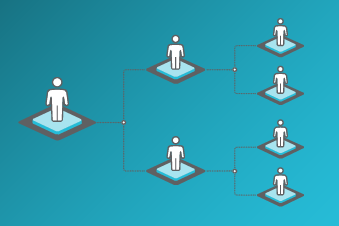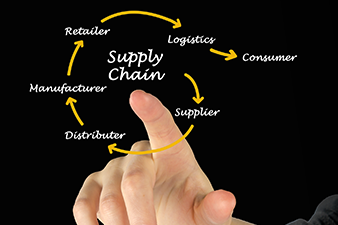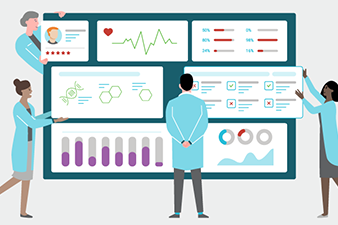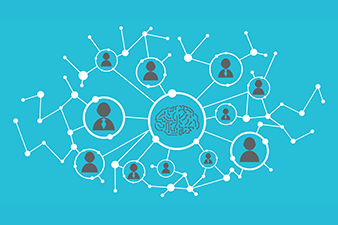
Five Considerations for Healthcare HR Leaders
The COVID-19 pandemic has forced healthcare human resources (HR) teams to flex policies, processes, programs, and resources to adapt to operational changes. For example, healthcare HR organizations have experienced increases in call volumes related to furlough, benefit, and leave questions; increased data changes to process organizational shifts; and communications to accommodate new workplace rules. Healthcare HR organizations with strong operating models adapted better and quicker to manage these shifts and mitigate associated risks. Foundational operating model elements that enabled these HR organizations to excel during this time of disruption include an optimized service delivery model, standardized policies, processes, and programs, metrics, workforce planning, and workforce management.
To ensure your organization is prepared to navigate tumultuous events, HR leaders should consider the following:
1. Key Components for Best-in-Class HR Operations
During the pandemic, healthcare organizations with strong HR operations groups were more capable of flexing to support changing service delivery needs. An HR operations group includes a service center, technology and data teams, and process improvement expertise. In addition, the operations group is supported by robust technologies and tools, including multi-channel management, portal, knowledgebase, case management, and HCM systems. During the pandemic, higher-performing healthcare organizations used the HR operations group as the crisis response center. The operations group was able to handle increases in administrative work, respond to upticks in employee questions, serve as the communications command center, and quickly launch policy, process, and program changes for the organization.
The value of frequent transparent and consistent crisis communications proved key with many healthcare systems. HR operations, including employee service centers, portals, and knowledgebases, were leveraged to provide timely information to employees. In addition, employees were able to access new and updated knowledgebase articles on work rules, paid time off, leave, travel, and other topics that supplemented regular HR communications.
“Having just revamped our operating model before the COVID-19 pandemic began, we recognize that we would not have been as prepared to make quick operational adjustments and continue providing effective, uninterrupted service to our clients throughout our health network.”
–Vice President of Human Resources
High-performing HR service centers were also able to gather employee feedback through calls and pulse surveys to identify areas of response improvement.
HR operations direct-access or self-service technologies allowed employees and managers to access various HR services, e.g., employee time, shift changes, open shift coverage, employee data changes, and pay changes in real time. This enabled hospitals and healthcare systems to reallocate staff and process data changes in a more timely fashion.
Going forward, consider how effective your operating model is to support unexpected business disruptions, as well as improvement opportunities to better leverage technologies, including mobile capabilities, for service delivery and transaction processing.
2. Increasing Agility with Policy, Process, and Program Optimization
Healthcare providers who had standardized enterprise-wide policies, processes, and programs in place, and maintained approaches to continuously review and update these elements, were able to rapidly adapt operations. These organizations used qualitative and quantitative data to assess business impacts of potential changes and continued to modify and improve specific elements as a result. These organizations will be equipped to quickly identify policies, processes, and programs, such as licensure and certification, that need to be audited because of relaxed requirements implemented during any crisis.
By contrast, other organizations that lacked standardized policies, processes, and programs made modifications at local or group levels. Inconsistencies across the enterprise shifted the majority of question handling and transactions related to shift coverage, time and attendance, leaves, and similar items to local HR. These organizations will likely show lower engagement scores across HR. Furthermore, these organizations will struggle to tighten policy, process, and program areas as operations return to normal and shift employee and manager questions and transactions back to their service centers.
It remains to be seen what policy, process, and program changes made amid the pandemic remain in place. Some new operational practices—remote orientation, video interviewing, licensure verification, work from home, and others—may, at some level, become the new normal.
|
 |
A focus on standardization and continuous improvement are worthwhile endeavors. Standardized policies, processes, and programs provide proven value in times of turmoil, not just during COVID-19 but for the last three decades during a wide variety of disruptions. Ensure that these efforts are reinforced by developing the tools and knowledge infrastructure (e.g., desktop procedures) that your HR staff can leverage to support the process.
“Standardized policies, processes, and programs across the enterprise have proven to produce significant value in time of turmoil—not just during COVID-19 but for the last three decades during a wide variety of disruptions.”
–Partner, ScottMadden
3. Enhancing, Capturing, Monitoring, and Reporting Performance Metrics
Established and monitored key performance indicators for key processes and programs have always been important for the success of your HR operating model. These provide critical performance information to the organization and help establish trust in HR and its services.
“Top-performing organizations leverage employee and manager direct access and case management systems for intake and tracking of key data, such as COVID-19 employee leaves.”
However, the importance of capturing, monitoring, and reporting metrics to track operational continuity has been heightened during the pandemic. For instance, it is important to understand leaves of absence to plan for an organization’s employee census needs. How many employees appear to be on a leave but have returned to work? Top-performing organizations leverage employee and manager direct access and case management systems for intake and tracking of key data, such as COVID-19 employee leaves. These technologies allow organizations to effectively monitor data and trends and inform actions to improve operations and communications. Similarly, having visibility into knowledge content data, such as content views, search terms, search frequency, and similar elements, can inform the HR organization on what information is in demand and identify content that needs to be updated.
4. Increasing Effectiveness: Workforce Management
Regardless of the industry, recruiting and onboarding services are changing dramatically—from using AI-based tools to screen candidates to virtual interviews to onboarding “curbside services.” In healthcare, talent acquisition efforts have focused on redeployment, short-term staffing, and rapid hiring for certain positions. Resource banks and contingent labor have been used to fill high-need areas during the crisis, including basic critical activities like temperature checks. The drastic shifts in staffing demand (e.g., high in ICUs and low in elective surgeries) may have highlighted areas where an organization’s short-term staffing model could be more agile. As you rethink and reboot for the future, consider how your organization might better predict staffing needs, fill open shifts, reduce contingent labor needs, redeploy resources in surge situations, and/or identify and attract candidates.
Healthcare systems that were the most successful in managing staffing demands during the pandemic were adept at flexing staffing on a shift-by-shift basis before the crisis hit. These organizations had a reduced need for short-term staffing solutions. Technology is often leveraged to help manage staffing. To quickly mitigate over- or understaffing on shifts, it is critical to integrate staffing information with:

These technologies also have scheduling capabilities that can streamline the deployment of staff and fill open shifts to reduce overtime.
5. Critical Workforce Planning Elements
The pandemic has highlighted the importance of anticipating your workforce needs and mitigating expected gaps. A robust operating model is a gateway for data and insights to support elevated services like workforce planning. For many hospitals and healthcare systems, HR is striving to better assist clinical leaders in developing workforce plans that reflect various scenarios for the future. At a minimum, the pandemic is a reminder to evaluate key workforce elements:
- Differentiation between essential and non-essential workers
- Workforce size and composition (e.g., vendor arrangements or contract staffing)
- Skill needs (e.g., leadership, stress management) and/or capability gaps (e.g., operating remotely, decision-making) exposed or redefined by the crisis
- Ensuring a workforce that can transition to the “future of work” (e.g., greater levels of automation, career fluidity, contingent labor, changing organizational structures)
- Recent learnings from workspace optimization that may inform longer-term planning
- Opportunities for cross-training to be more nimble
Succession plans and alternative staffing plans should be integrated with workforce plans. The crisis has underscored that healthcare organizations should have contingency plans for critical positions or essential workers, especially individuals who are vital to operations. HR should work with clinical and administrative departments to determine critical roles and identify potential backups. Backup resources can be sourced from a variety of avenues, including recent retirees, alumni, medical and nursing school students, and cross-trained resources. In some cases, it may make sense to incorporate elements of the succession plan or alternative staffing plans directly into a business continuity plan. In addition, there may be an opportunity to ensure it aligns to the organizational business continuity management program.
Key Takeaways
Having a tested operating model has proven to be critical to navigating emergencies. Regardless of your level of preparedness for the pandemic, it is important to address gaps in your operating model. Furthermore, trends such as M&A, cost containment (including back-office administrative costs), and employee engagement are constants in healthcare. HR’s ability to effectively support these strategic activities is also dependent upon a strong operating model. Take the time to process the lessons learned from the pandemic and how they might reshape your HR organization’s priorities, including enhancing your disaster recovery strategy for future disruptions.
How to Reach Your Vision for Business Continuity
If improving business continuity is a priority for you, access more resources specific to your needs by contacting us. We will share what has worked well with healthcare organizations similar to yours and discuss how to customize an approach to help you achieve your goals with a proven framework. From large, managed care consortiums to single-hospital systems, ScottMadden has worked extensively with leading healthcare organizations. With a track record of helping clients establish operational infrastructure, ScottMadden can help you think through these considerations and implement a plan to better prepare your organization for the future.
Learn more about our healthcare capabilities.
